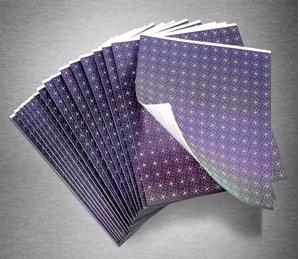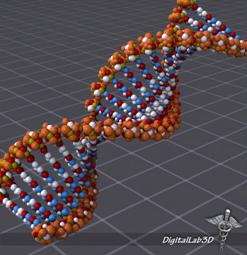Title: Imperative Role of Nanotechnology in Shaping the Future
Authors: M.Sravani & K.Chandana Srija, 3rd Year BTech, Mechanical Engineering
College: Gayatri Vidya Parishad College of Engineering
1.ABSTRACT:
This technical paper mainly emphasises the need of nanotechnology to meet the appropriate comfort level of the people.It plays an important role in every field.It is useful in forensics, genetic engineering, robotics, medicines, print markets, construction of materials with a very good strength.In addition they are very cheap and efficient.It is a smart and upcoming technology which does not produce any negative impact on the environment.
2. INTRODUCTION:
The present day technology gave man a very comfortable and lavish life. But in countries like India, there are many problems faced by a common man. Alarming rise in price of daily used goods, electricity bills, petrol, etc… is the present scenario. Also, there is compelling need of an advanced and smart technology in many fields like medicine, forensics, salination etc.. It plays a prominent role in conserving elecricity using solar power at a very low price.
To be more precise, it is the passionate technology ought to be utilised by a smart engineer. Fast, better and cheap products can be made, than using conventional methods. We can expect computer control molecular machines with good accuracy.
It also has a good impact on war crime, terrorism and massive industries, nanorobotics, nano machines, smart weapons, nano electronics. This nanotechnology is present for a long time. But, the difference is at present we are beginning to understand them at fundamental level. Now, lets have keen look on the applications of this smart technology to solve the present day problems.
3. IDEAS:
3.1 . IMPACT ON SOLAR POWER:
Generally, in the present world, due to increase of population, there is a significant difference between the supply and demand of electricity. Hence, solar power is preferred by the people. But, the disadvantage is solar panels are too costly and require a complex mechanism.
Hence, nano solar panels ought to be preferred because, they are
• Minimise generation costs of energy.
• No damage to environment.
• Generate renewable and recyclable energy resources.
• Provide energy and electricity with appropriate and least possible charges.
• Delivers electricity and energy to public at low cost.

http;//www.solarfeeds.com/images
Nanotechnology itself illustrates that the products are produced initiating from the molecular level i.e., from the nanostructures. So, the products will be more efficient. Therefore nanotechnology builds products with use of tiny machines of good quality and efficiency.
• Many researches are conducted to come up with a solar panel that would accurately capture solar energy that can be utilised at home, office and even in large scale industrial area.
• Although solar panels exist in present markets, they are made of silicone panels which capture only 67.4% light incident solar energy emitted by the sun.
• In nanotechnology along with solar panels, we can now produce a coating for solar panels using nanorods that can capture 96.7% light incident.
3.1.2. NANORODS:
• Nanorods are used in solar panel look layer multi layer funnels.
• These are designed to capture incident light.
• The first layer absorbs the light that hits the panel at wide outer angles and turns it to a slightly narrower angle.
• The succeeding layer becomes narrower, like they are passing the light to next layer even further as it funnels the light.
• This light funnels till it reaches the active region of panel at a 90 degree angle.
This process makes the solar panel capture the sun’s energy without having to rotate with sun.
3.2. APPLICATION IN FORENSICS:
• Generally, at present, genetic engineering is being used in forensic department to detect the convicts involved in the crime.
• DNA reports help a lot in detecting the culprits behind the crime.
• But, a reliable DNA is anticipated with a maximum cell count of approximately 80.
• But, it is also now possible under certain circumstances to examine the DNA required for a profile has decreased drastically in recent days.
Using nanotechnology, 0.5 nanograms of DNA or less are sufficient for reliable and relatively trouble free generationof a DNA profile.That is equivalent to half of a millionth of milligram !!!
RELP (restriction fragment length polymorphism) analysis is used to generate the DNA profile in 1980’s, there was no chance of success with such small amounts.
3.2.1. FUNCTIONIZED NANOPARTICLES MADE OF GOLD:
• There are many applications of nanoparticles in fingerprints identification.
• One such sample is functionized nanoparticles made of gold.
• They are coated with shell of antibodies and special proteins which release flourescent light under certain conditions i.e., under the exposure of U.V/ infrared radiations.
• If these antibodies come in contact with biomolecules, they get attached to them, the chemical structure of proteins changes.
• Illuminating these proteins with a special light flourescences them and reveals that something has been found.
• This process is extremely sensitive and can verify with minimal evidence.
• Actually, DNA structure of victim is being collected at the site where the crime took place.Hence, the nanomagnetic particles are attached to this DNA structure.
• Then, these nanomagnetic bodies are attracted by a magnet very scientifically and hence we get pure DNA structure which determines the person’s identity.

http://www.3DDNAstructures.com
3.3. IMPACT ON WATER:
Nanotechnology also plays an important role in purifying water.
• Purification of water using nanotechnology can be done using carbon nanotubes and alumina fibres for nanofiltration.
• It also utilises the existance of nanoscopic pores in zeolite filtration membranes as well as nano catalysts and magnetic nanoparticles.
3.3.1. NANO CATALYSTS:
• Nanomaterial based catalysts are the catalysts broken up into metal nanomaterials in order to speed up the catalytic process.
• Metal nanoparticles have a higher surface area so there is increase in catalytic activity because more catalytic reactions can occur at the same time.
• Nanoparticle catalysts can also be easily separated and reccled with more retention of catalytic activity than when they are in bulky amounts.
3.3.2.CARBON NANOTUBES:
• Carbon nanotube membranes can remove all kinds of water contaminents including turbidity, oil, bacteria, viruses and organic contaminants.
• On account of smooth interior of the carbon nanotubes, though they have small pores, there is a smooth flow rate.
• Nanofiber alumina filters and nanofibre materials also remove negatively charged contaminants such as viruses, bacteria, organic and inorganic colloids at a faster rate.

http://www.nanotech-now.com
3.3.3 NANO FILTRATION:
• The use of nanofiltration has been extended into other industries such as milk and juice production.
• The application of nanofiltration can be extended into new areas like pharmaceuticals, fine chemicals and flavours and fragrance industries.
• The main advantage of nanofiltration is greater surface area to volume ratio of nanoparticles can make them more reactive than bulk materials.
• Nanofiltration is least used method of membrane filtration in industry as sizes of membrane pores are limited to only nanometers.
• Nanofiltration units in drinking water purification range from extremely low salt rejection(<5% in 1001A membranes) to almost complete rejection(99% in 8040-B80-BA membranes).
• Flow rates range from (25-60 m3 /day) for each unit, so commercial filtration requires multiple nanofiltrtion units in parallel to process large quantities of water.
4. NANODOT TECHNOLOGY:
• Nanodot technology is originally developed in Italy, Australia and Germany started to use nanodot technology with success.
• Its a significant technology introduced in Italian sportswear and garment manufacturing sector.
• It is a largest format inkjet sublimation process which optical pigment dispersion takes place i.e., reducing the nanoparticles and combining with fixed ionic polymers on actual particles.
• It allows improved ink flow, faster drying and better stability during print process.
Main advantages of nanodot technology is that it is used in making banknotes where it is not possible for forging by creating special holograms.
5. CONCLUSION:
Nanotechnology is 21st century’s ‘great leap forward’ in scientific knowledge. Also, to be more precise, it is the technology which make the science fiction to be predicted and become a scientific reality.Also, we can see atoms at nano level through scanning electron microscope, transmission electron microscope.The more recent microscab machines developed are microelectromechanical systems.Nanoscience may open up new ways of making computer system and message transfer secure hardware keys that are immune to any form of hacking.Usin nanosystems, better and cheaper products can be made than using conventional materials.Hence, we can agree the welcoming of nanotechnology is imperative as it is the one which shapes the future.
6. REFERENCES:
• Mick Wilson, Kamali Kannangara, Geoff smith, Michelle Simmons and Burkhard Raguse, 2008, Nanotechnology:Basic science and emerging technology, university of new south wales press Ltd.271 pages.
• Sulabha K Kulakarni, 2011, Nanotechnology principles and practices, capital publishing company.312 pages.
• http://www.nanostart.de/index.php/en/nanotechnology.
• http://www.nanotech-now.com.
• http://phys.org/news199595945.html.
• http://en.wikipedia.org/wiki/nanofiltration.
